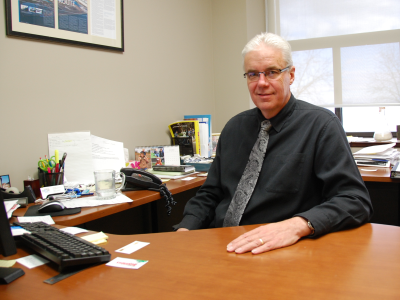Thunder Bay isn't being tepid about maximizing the potential spinoffs in the mineral industry.
The city is putting together an aggressive game plan to reap the full benefits of a growing stable of mine developments across the region.
Municipal officials and their consultants took a still-developing Mining Readiness Strategy to the public this fall to present an exciting big picture of the profound impact that the coming mining boom will have on Thunder Bay's economy.
Thirteen new mines and expansions are anticipated to go into operation across the northwest over the next five years.
The Thunder Bay Community Economic Development Commission (CEDC) and its Fort William First Nation partner hired SNC-Lavalin and Edward Hoshizaki Development Consulting to wrap their collective heads around how big this industry can get and how the city can best benefit from the spinoff opportunities.
This economic development strategy is being coined the Thunder Bay Advantage.
John Mason, the CEDC's mining services manager, said area communities can't wait until the last minute for the mining companies to green light projects.
“For the municipalities, that might be too late,” said Mason, a former provincial geoscientist with the Ontario Geological Survey.
“They've got to start thinking about subdivisions and infrastructure. They've got to hedge their bets based on the facts before us that indicate the bulk of these projects are going to go, if not all of them.”
There will be an influx of construction workers, skilled labour and a surge of incoming supply companies looking for property to set up shop.
The scale of these projects are too big to ignore, said Mason.
The region is a breadbasket of gold, chromite, platinum-palladium, nickel, iron ore and lithium-rare metals deposits.
Companies like Stillwater Mining of Montana acquired the Marathon PGM project and landed a deep-pocketed development partner in Japan's Mitsubishi.
On everyone's lips is Cliffs Natural Resources, the lead player in the Ring of Fire chromite development. Quebec's Osisko Mining Corp. is developing the Hammond Reef gold project in Atikokan and construction of Detour Gold's massive Detour Lake project, north of Cochrane, is a “second to none type of project,” said Mason.
And there's growing international investor interest coming from China and India.
Mason said area producers Goldcorp and Barrick routinely yield between one-third to 40 per cent of Canada's annual gold production.
That kind of production is sometimes lost on Northerners, but Mason said the international investment community surely sees it.
Two September public meetings were aimed at informing and soliciting feedback from residents and industrial suppliers that will be incorporated into a final planning document for release early next year.
“We've got to hear from everybody from educators, trades union, a broad spectrum of people, to ensure we've covered all the bases,” said Mason.
There's a growing realization that mining could become larger than forestry, but Mason said people won't believe how big until the ripple effects reach Thunder Bay.
“Maybe it's going to resonate with some people that these projects are real, that they are large, and they ask themselves, how do I get on board and what's the opportunity for me and my kids?”
A Lakehead University socio-economic study focussing on nine 'mature' projects, indicated that 7,430 jobs will be created in the northwest over an average mine life of 17.5 years.
The economic impact across Ontario would be more than $1.1 billion in employee compensation with the average salary of a northwestern Ontario worker at $71,470.
Mine revenues for cash-strapped governments should exceed $16 billion.
A mining boom will turn Thunder Bay into a major supply hub. But the city wants to avoid a Fort McMurray situation where the growth in population and business outstrips community capacity.
“We're in a real housing crunch the last couple of years in Thunder Bay,” said Mason. “The planning has to take place.”
Mining companies prefer to have their workforces housed nearby rather than rotating into town, and municipalities want workers to buy homes, pay property taxes and become part of the community fabric.
Infrastructure-wise, Thunder Bay must take stock of its roads and bridges, and size up airport and port capacity to handle mining-related cargoes, goods and passengers.
Mason said other questions remain about how to attract skilled immigrants and how to get Aboriginals and young people interested in the industry.
With the public sessions done, the consultants are assembling focus groups of key stakeholders in transportation, training, labour, energy and First Nations, while also reaching out to outlying communities like Marathon and Pickle Lake to include their input.




